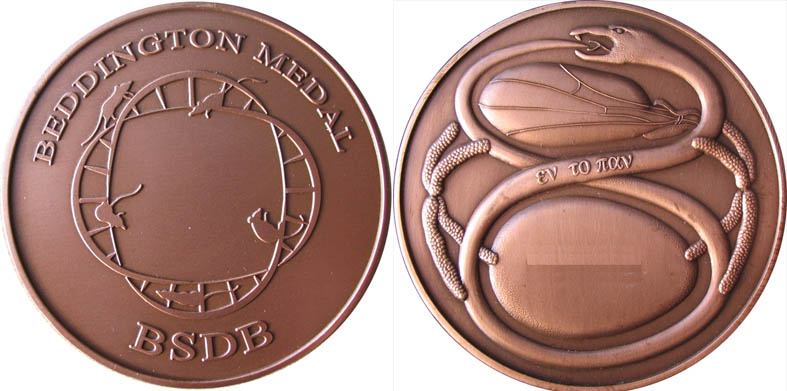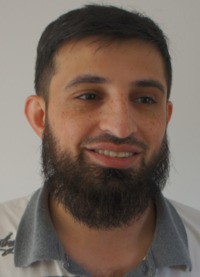An interview with Wajid Jawaid, 2020 BSDB Beddington Medal Winner
Posted by the Node Interviews, on 22 April 2021
The Beddington Medal is the British Society for Developmental Biology’s major commendation to promising young biologists, awarded for the best PhD thesis in Developmental Biology defended in the year previous to the award.

In 2020 the Beddington Medal was awarded to Wajid Jawaid, who did his PhD with Berthold Göttgens and Jenny Nichols at the Wellcome-MRC Stem Cell Institute, University of Cambridge. After the cancellation of the spring meeting in 2020, Wajid is going to present his work today at the BSDB/Genetics Society 2021 meeting, right before the 2021 winner (who we’ll also interview soon). In advance, we caught up with Wajid to find out more about his life in science. Be sure to also check out the profile of Wajid – including words from Jenny Nichols and a list of Wajid’s selected publications – over on the BSDB site.

Where were you born and where did you grow up?
Birmingham is my home town and where I was born and schooled. My family are still there and I love visiting regularly.
When did you first get interested in science?
I’ve always been interested in how things work since as far back as I can remember and have had a keen interest in science since school. My eyes were really opened during my first year at University in Aberdeen when I found the treasure trove ‘Pubmed’ during a special study module on road traffic accidents. I couldn’t believe the amount of information that was freely available to anyone with an internet connection.
You came into your PhD from paediatric surgery – why did you decide to move into research, and why with Berthold Göttgens and Jenny Nichols in particular?
I became interested in paediatric surgery after my elective at British Columbia Children’s Hospital in Vancouver which exposed me to rare congenital anomalies and their surgical correction or at least amelioration. The process of reading and learning about the embryology that forms the basis of normal development and how it can go wrong consolidated my interest and I decided I wanted to become a Paediatric surgeon.
My interest in science and embryology drove me to apply for an Academic Clinical Fellowship (ACF) post in Paediatric Surgery based at Alder Hey hospital. There I met two wonderful mentors Professor Paul Losty and Mr Edwin Jesudason. As part of my ACF I visited Dr Emma Rawlin’s lab at the Gurdon Institute. This was my first exposure to lab based research and I soon became aware of the importance of integrating multiple and large sources of data. At the time I also became aware of Professor Jenny Nichol’s work in early embryogenesis, embryonic stem cells and pluripotency.
The Wellcome Trust kindly agreed to allow me to extend my PhD by taking 1 year to do a MPhil in Computational Biology at the Department of Applied Mathematics and Theoretical Physics co-ordinated by Dr Stephen Eglen and Dr Boris Adryan. This was a critical year that gave me the skills that I would use through-out my PhD. During the MPhil I attended a talk given by Professor Bertie Gottgens where he presented his most recent dataset and the concept of computational reconstruction of a pseudo-time developmental trajectory from single cell resolved qPCR data. I approached him and together we developed a project with Professor Jenny Nichols.
Tell us about your PhD project: what were the main questions you were trying to answer?
The development of new technologies allowing application of ‘-omics’ methods to single- cells was paving the way to understanding cell biology at much higher resolutions than previously possible. One application was in elucidating the journey of a progenitor cell as it became sequentially fate restricted until it finally reached its destination cell type. Despite the advances in technology it had not been possible to follow this journey across all genes/transcripts over time in-vivo. Single cell RNA sequencing was in its infancy but had the potential to achieve computational reconstructions of these journeys if single cells could be harvested from mouse embryos and retain their transcriptome. At the time it was not clear whether single cell transcriptomic data could be gathered at sufficient precision from dissociated embryos to allow cell type identification and lineage reconstruction.
The overarching theme of this body of work was to develop methods to reconstruct ordered ontogenic trajectories through sequentially sampled cross-sectional data at gastrulation in mice. The main focus was using single-cell resolved, transcriptomic data collected during early mouse embryonic development. Where available this was supplemented with limited, hand selected cell surface proteomic measurements.
The main aims were: 1. Identify cell populations; 2. Trace biologically plausible trajectories; 3. Identify novel molecular pathways; and 4. Develop models that can faithfully simulate cell progression along trajectories
This method of lineage reconstruction best fitted with retrospective lineage tracing. Lineages were traced based on the assumption that within a window of developmental time, cells with the most similar transcriptional signatures were related by lineage.
And what do you think your key discoveries were?
Our first experiment was to take early mouse embryos at gastrulation at four time points between E6.5 and E7.75. In the 3 later time-points cells were sorted to select for Flk1+ or CD41+ mesodermal cells using and An early key finding was that single cell resolved embryonic cell type could be accurately determined. Having identified cell types we were able to the identify sub-populations within the endothelial cluster and focus our analysis on a set of genes associated with erythromyeloid progenitors. In this way we were able to identify the activation of the leukotriene branch of the arachidonic acid pathway within this subset of endothelium. This reminded me of biochemistry from my pre-clinical years and its association with asthma so I was easily able to recall an inhibitor Zileuton. We went on to validate its role in haematopoiesis in an in vitro model of haematopoiesis. Another interesting observation Zileuton itself a derivative of hydroxyurea induces foetal haemaglobin and may have a role in the treatment of sickle cella anaemia. This finding then potentially suggests the mechanism of action of Zileuton.
Given advances in stem cells and organoids, what do mice still have to tell us about early mammalian development?
There have been great achievements in stem cell biology and organoids but they are still a long way off the gold standard the developing embryo which can at relatively high efficiency develop from a single cell to a recognisable organism with cells arranged in functional organ units. This complex process can not yet be faithfully recapitulated in any stem cell or organoid system.
By studying this process in nature we may be able to adjust our culture systems to improve the fidelity of both stem cell and organoid models of normal physiology and disease.
If you took one abiding memory with you from your PhD, what would it be?
Progress through a PhD is full of ups and downs. The moment that I am most fond of is when I was developing a neural network to model a bifurcating developmental trajectory to endothelial and blood fates. This had worked very well compared to a linear regression model. To test it, I wanted to perform a gene knock-out in Tal 1 which should have resulted in failure in erythroid generation. Unfortunately this was not working and I was ready to change tact when I realised I was dealing with qPCR data where activation was associated with a low cycle count – in my case it meant for knockout I should have been using a value of 14 rather than zero. When I corrected this error the network finally reproduced the experimental findings.
What are you doing post-PhD?
At the moment I have focused on completing clinical training. In the meantime I am also preparing to apply for a post-doc clinical fellowship to combine clinical and research work. My aim in the long term is to combine both research and clinical work. Clinical work often raises questions and challenges providing important research questions.
Where do you think developmental and stem cell biology will be in ten years?
I hope we will capture more the complex interactions and higher order abstractions of these interactions beyond pathways, linking the genome and its structure to function and anatomy. In 10 years, I hope that we are at the stage where our understanding of the information in the genome and the functional modules is sufficient to not only describe how organs develop but also how we can make changes to the programs of development to prevent disease phenotypes. So that in time, rather than disrupting development we can generate our own programs de novo.
Integration of multi-omics data with spatial context may help us move from the concept of differentiating a stem cell to more committed fates to generating complex structures of multiple cell types that can be used as substitutes for organs without artificial or de-cellularised scaffolds. Some organoid systems are already taking an early step in this direction.
When you’re not in the lab, what do you do for fun?
Over the last few years through my children going to a football club, I have become a volunteer coach at this local football club. More recently I’ve got my self a motorbike which I love to ride and fix up.


 (3 votes)
(3 votes)